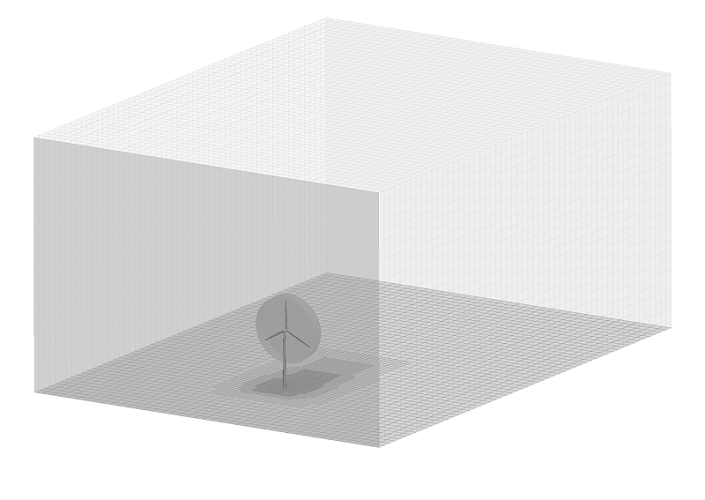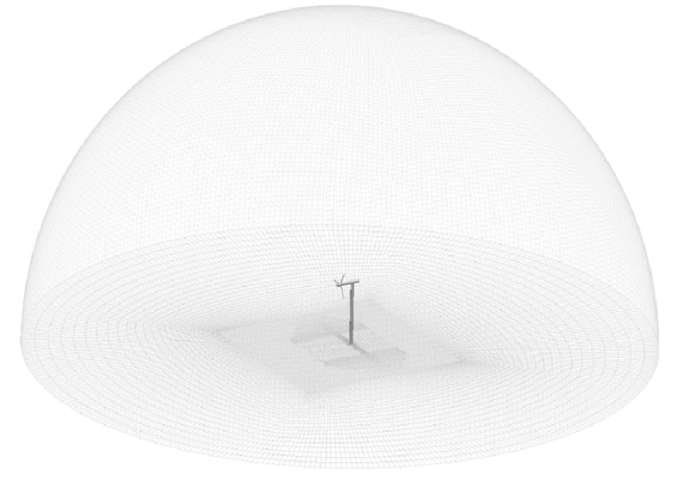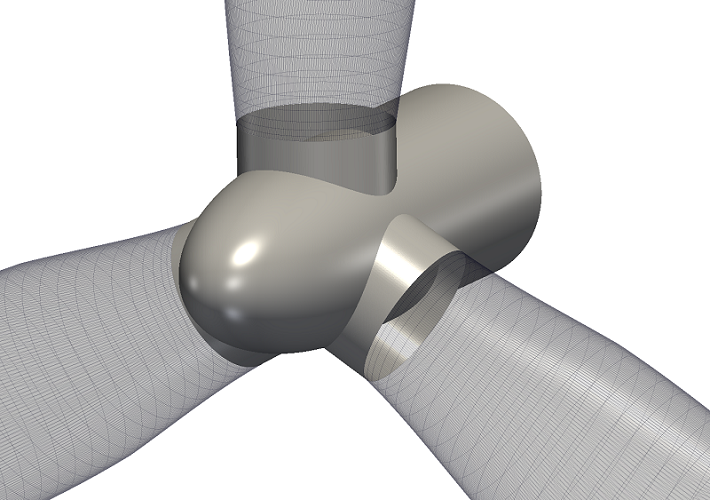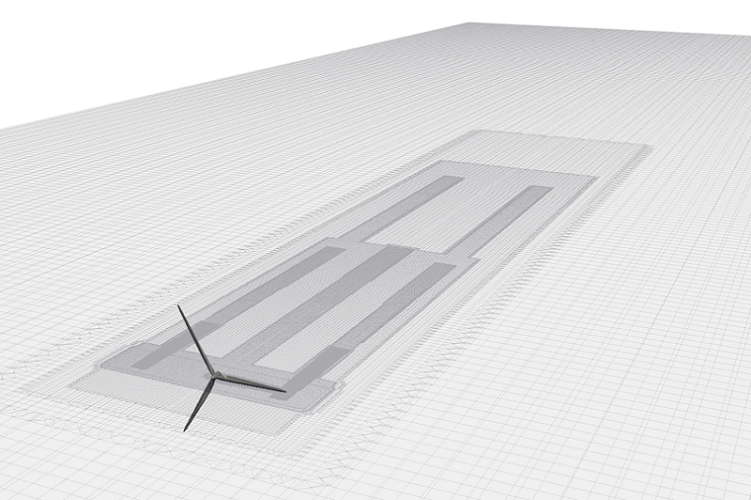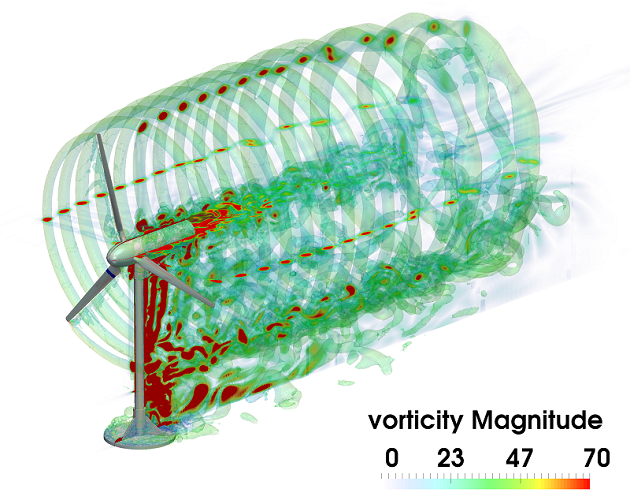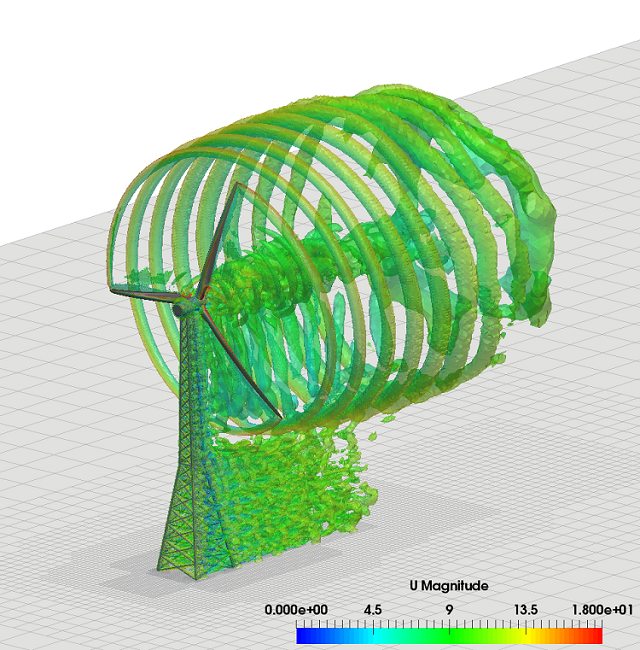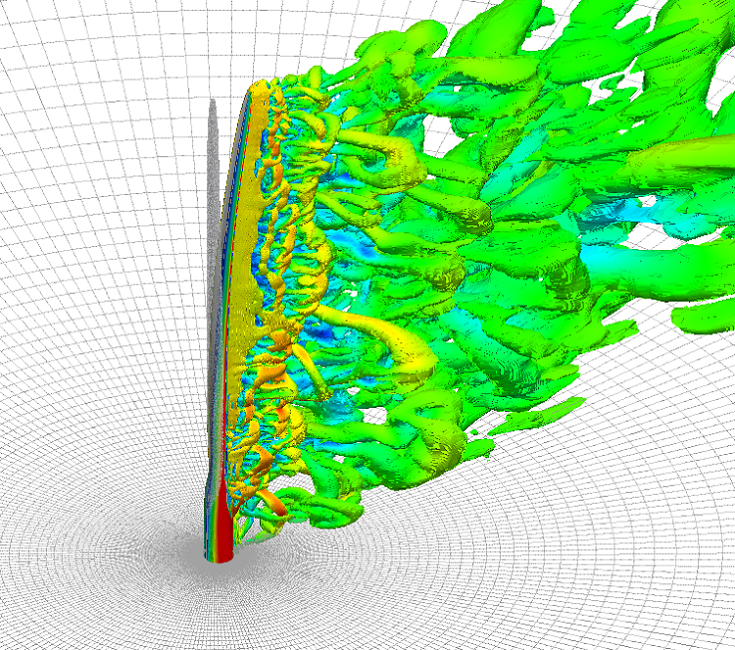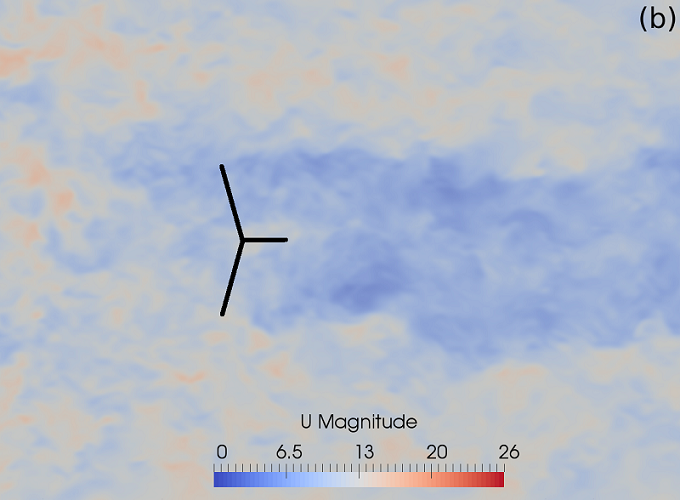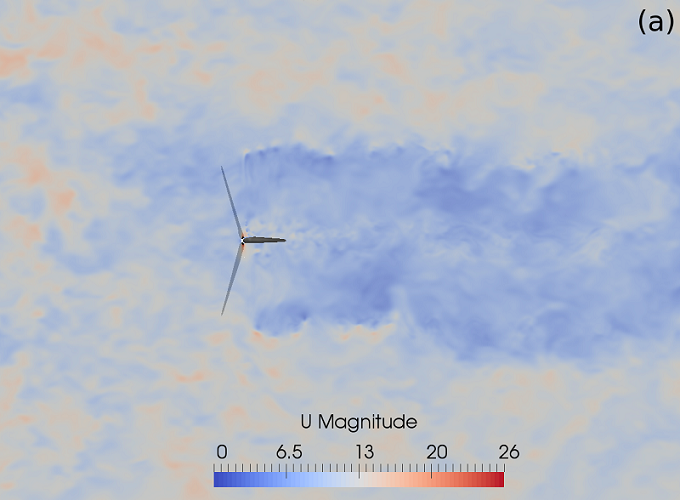The first requirement for a CFD simulation is the discretization of the fluid domain. Generating a high quality grid is no trivial matter. It is an even harder task if the geometry to be discretized presents a complicated shape such as a wind turbine blade.
At Fraunhofer IWES, we introduced two fully automated structured mesh generation tools for CFD simulations of wind turbines, namely bladeBlockMesher and windTurbineMesher. These tools were designed and developed to reduce the complexity of the mesh generation process and, moreover, to enable users to perform efficient CFD simulations of a complete wind turbine rotor. Please find hereafter a few images to illustrate these methods. Furthermore, a complete mesh of the NREL phase VI turbine can be found on the Fraunhofer Gritlab wepage.
